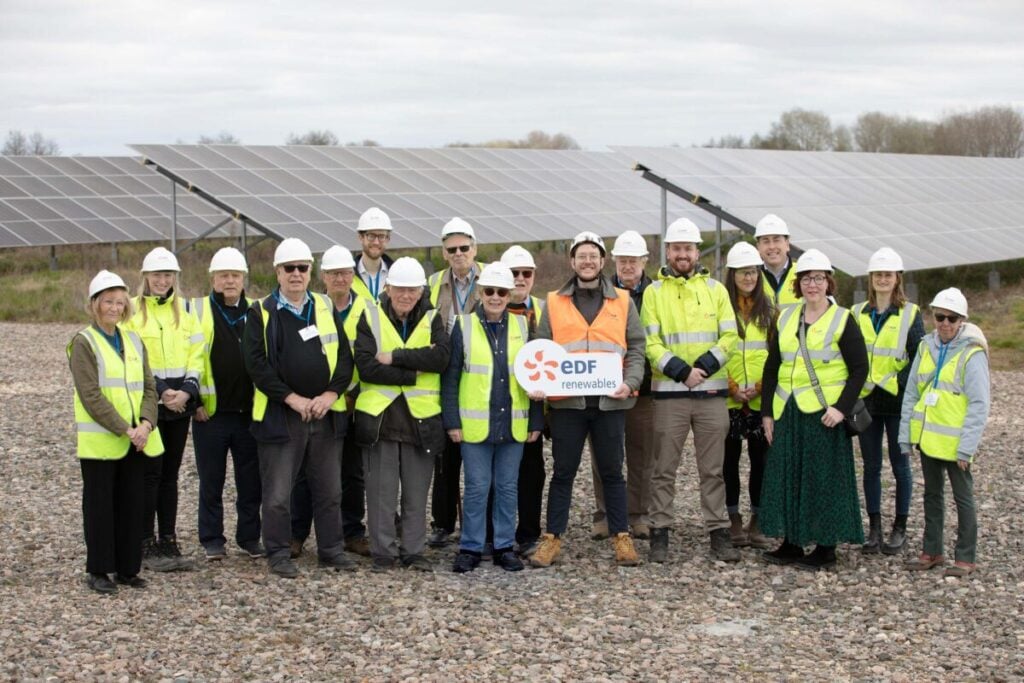
EDF’s first utility-scale solar PV power plant in the UK began generating electricity last year, triggering a £20,000 per annum community benefit fund.
EDF Renewables UK, the clean energy subsidiary of the French utility, announced yesterday (10 April) that the 49.9MW Sutton Bridge solar farm in Lincolnshire has gone into commercial operation.
As the first electricity began to be generated by the plant, the local community fund was opened. It will be administered by Lincolnshire Community Foundation, a charity set up in 2002 to support the district’s residents. Beneficiaries of EDF’s fund include Sutton Bridge Foodbank.
Local communities and representatives of organisations, including the foodbank, attended a celebration event during which EDF employees also explained the biodiversity benefits the PV plant is designed to bring.
Construction began at Sutton Bridge in 2022, a year after the local South Holland Council granted planning permission. EDF Renewables UK said at that time that biodiversity measures would include planting native hedgerow species to support wildlife.
Anesco was appointed as the project’s engineering, procurement, and construction (EPC) contractor.
EDF plans to install a battery energy storage system (BESS) at the site, for which South Holland Council has also granted planning permission.
“Solar is already playing an important part in the UK’s journey to net zero, so we are very proud that our first UK solar farm, Sutton Bridge, began operating last year,” EDF Renewables UK head of origination and planning Grant Foley said.
Biodiversity as key aspect of EDF project’s development
“During development, we placed a great amount of focus on improving biodiversity on site, so it is encouraging to see a variety of ground nesting birds, rabbits and muntjac now on site as a result of this hard work,” Foley said.
Recent studies from organisations, including the Royal Society for The Protection of Birds (RSPB) and trade association Solar Energy UK, have highlighted that large-scale solar can bring significant biodiversity benefits.
Balanced land use is increasingly considered an important aspect of community engagement and the work renewable energy developers can do to get local stakeholders onside; this will be the topic of several feature articles in the upcoming Q2 2025 edition of Solar Media’s quarterly technical journal, PV Tech Power (Vol.42).
In the journal, Solar Power Portal writer Molly Green takes a close look at the progress of one 800MW UK solar project, which initially faced local opposition. Developer Elements Green says in the article that it listened to concerns and incorporated biodiversity planning, partnered with local farms to allow sheep grazing at the site and—given the scale of the project—established a community benefit fund worth around £1 million per year.
Meanwhile, for EDF, Sutton Bridge was one of three large-scale solar PV generation assets the company brought online last year, adding to its existing UK portfolio that includes battery storage, onshore and offshore wind and about 20% of the country’s nuclear generation fleet.
Its initial solar PV plant developments are each sized at 49.9MW, which makes them slightly smaller than the 50MW threshold for Nationally Significant Infrastructure Projects (NSIPs).

